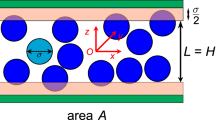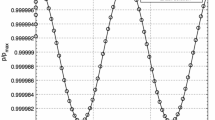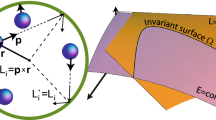Abstract
THE enumeration of eigenfunctions for a bounded continuum to a closer approximation than the Rayleigh asymptotic expression has, in recent years, largely because of its significance in problems of room-acoustics, received considerable attention1. The number of eigenfunctions with their wave-numbers equal to or less than K is given by where the value of θ depends on the boundary condition which the eigenfunctions (U) have to satisfy; θ = 1 when U vanishes at the boundary, and θ = +1 when n (n being the normal to the surface) vanishes at the boundary. We could contemplate other possible boundary conditions for which θ could take values between 1 and +1. V is the volume of the enclosure, S its surface area, and L has the dimension of length, which for a rectangular enclosure is the sum of the edge-lengths. That the volume term is independent of the shape of the enclosure was shown by Weyl (1911); for the surface term this is assumed, but a demonstration is lacking. The L-term is still more uncertain. (The order term O(K) is probably of order less than K3/2.) The effect of retaining the surface term in equation (1) on Stefan's law of radiation and on Debye's theory of specific heat was dealt with by one of us (D. S. K.) and has also been recently treated by Brager and Schuchowitzky2. They have further derived, by applying (1) to a completely degenerate electron gas, the following expression (assuming one free electron per atom) for the surface tension of metals, where A is the atomic weight and (gm. cm.3) the density of the metal. It is interesting to observe that the above equation, but with the value of α reduced by a factor of about ½, was obtained on certain assumptions from the electron theory of metals by Gogate and Kothari, jun.3, who found the equation in reasonably good accord with experiment; the experimental values of σ give α as about 2.2 × 104.
This is a preview of subscription content, access via your institution
Access options
Subscribe to this journal
Receive 51 print issues and online access
$199.00 per year
only $3.90 per issue
Buy this article
- Purchase on Springer Link
- Instant access to full article PDF
Prices may be subject to local taxes which are calculated during checkout
Similar content being viewed by others
References
Bolt, R. H., J. Acous. Soc. Amer., 10, 228 (1939). Husimi, K., Proc. Physico-Math. Soc. (Japan), 21, 759 (1939). See also Morse, P. M., and Bolt, R. H., Rev. Mod. Phys., 16, 69 (1944). (The lattice points corresponding to 2 = n12 + n22 + n32 have been tabulated by Gupta, H. B. (Proc. Nat. Inst. Sci. India, in the press) for 100.)
Kothari, D. S., Science and Culture, 6, 246 (1940); loc. cit., 247. Brager, A., and Schuchowitzky, A., J. Chem. Phys., 14, 569 (1946). In discussing the effects of surface area on specific heat of dispersed liquids (sprays) account must also be taken of capillary (surface) waves.
Gogate, D. V., and Kothari, D. S., jun., Phil. Mag., 20, 1136 (1935).
Author information
Authors and Affiliations
Rights and permissions
About this article
Cite this article
KOTHARI, D., AULUCK, F. Surface Tension of Nuclear Matter and the Enumeration of Eigenfunctions of an Enclosed Particle. Nature 159, 204–205 (1947). https://doi.org/10.1038/159204a0
Published:
Issue Date:
DOI: https://doi.org/10.1038/159204a0
This article is cited by
-
Effects of boundaries on the thermodynamic properties of a Fermi gas
Soviet Physics Journal (1965)
-
Bose–Einstein Statistics and Helium Films
Nature (1959)
Comments
By submitting a comment you agree to abide by our Terms and Community Guidelines. If you find something abusive or that does not comply with our terms or guidelines please flag it as inappropriate.



